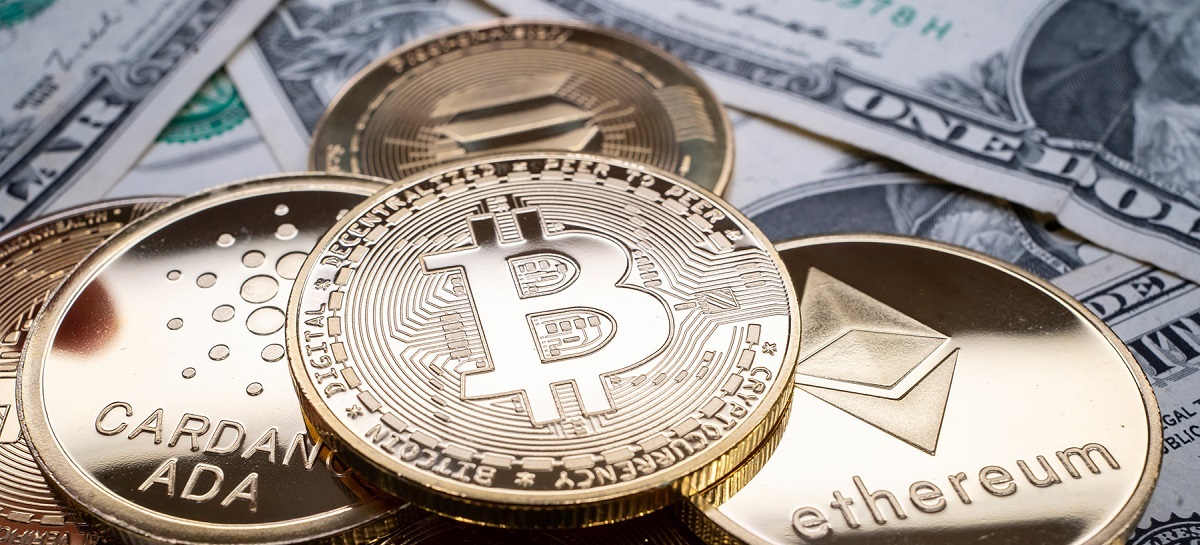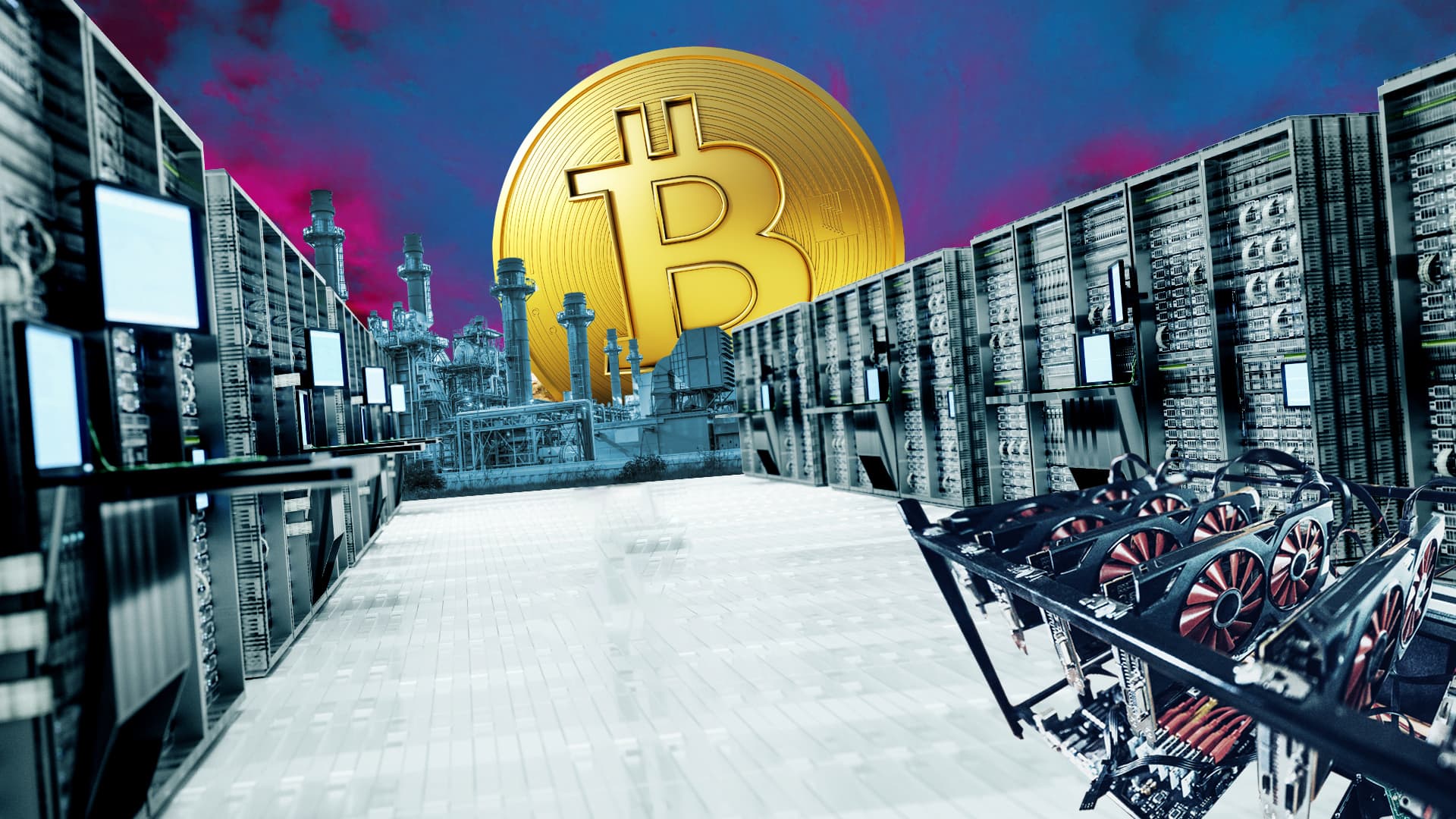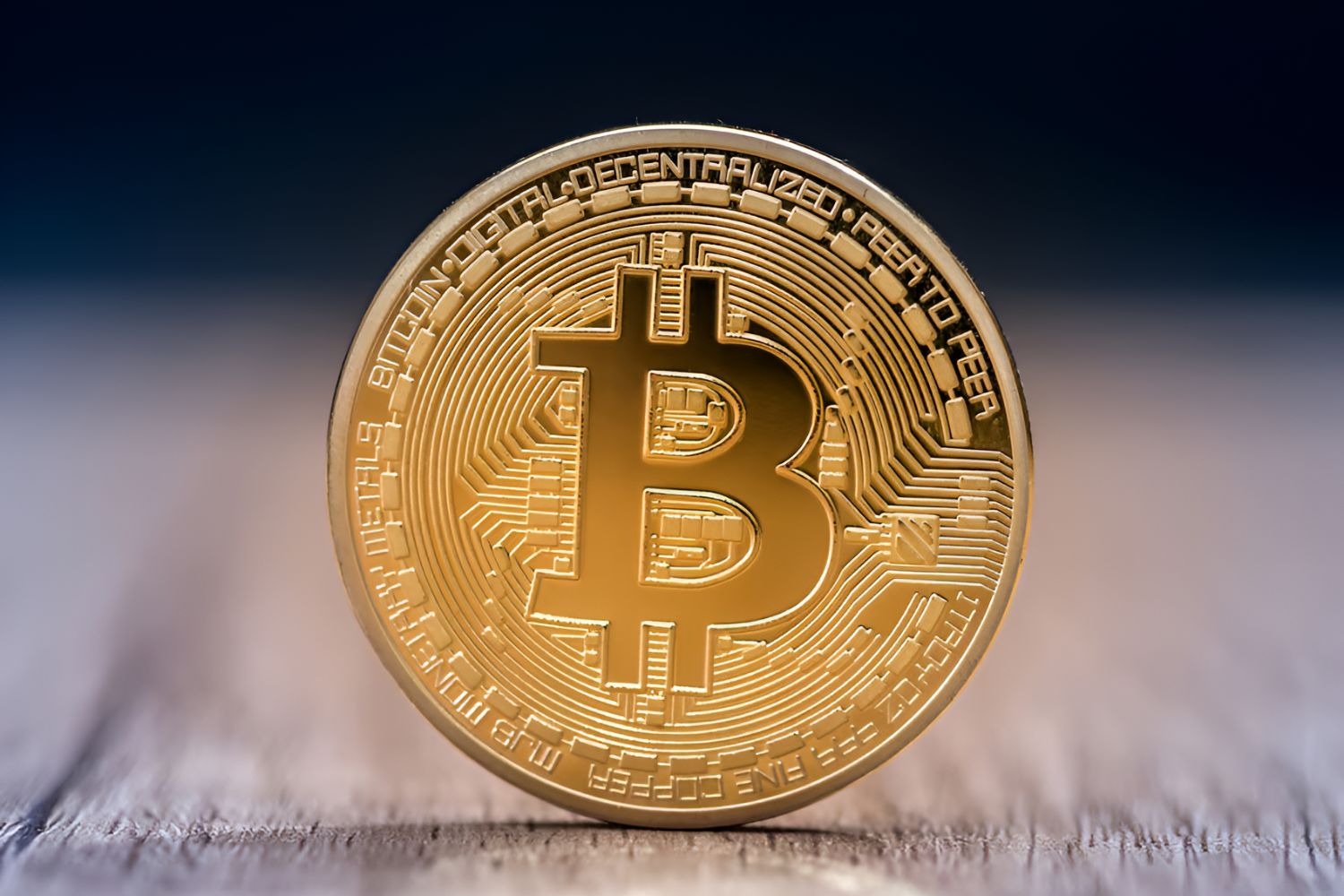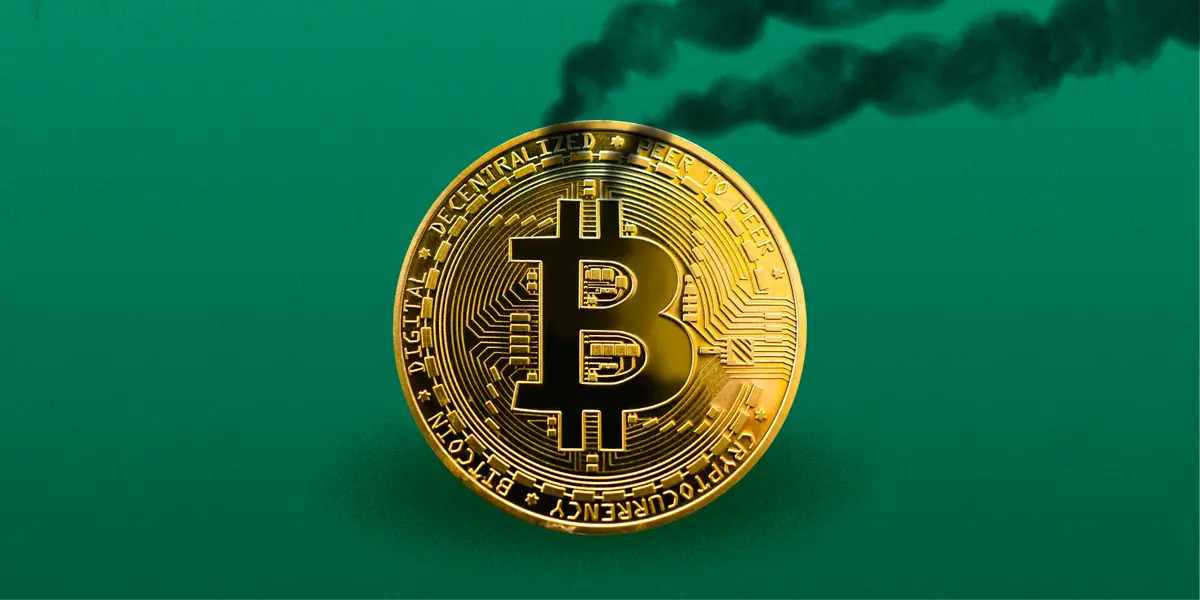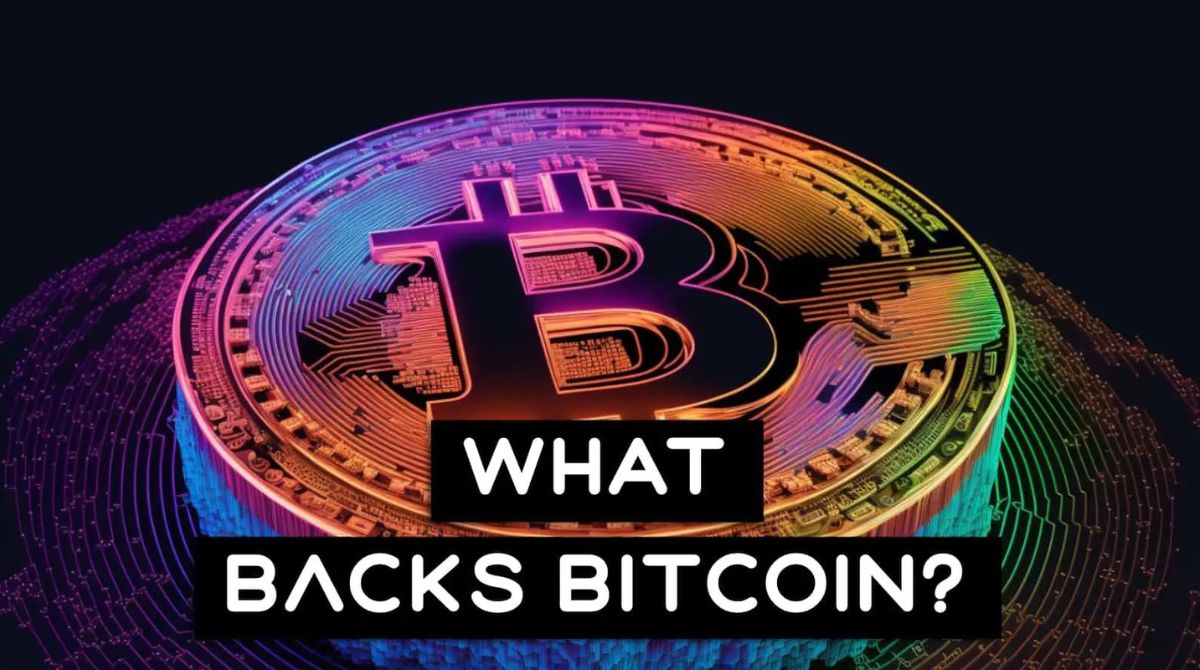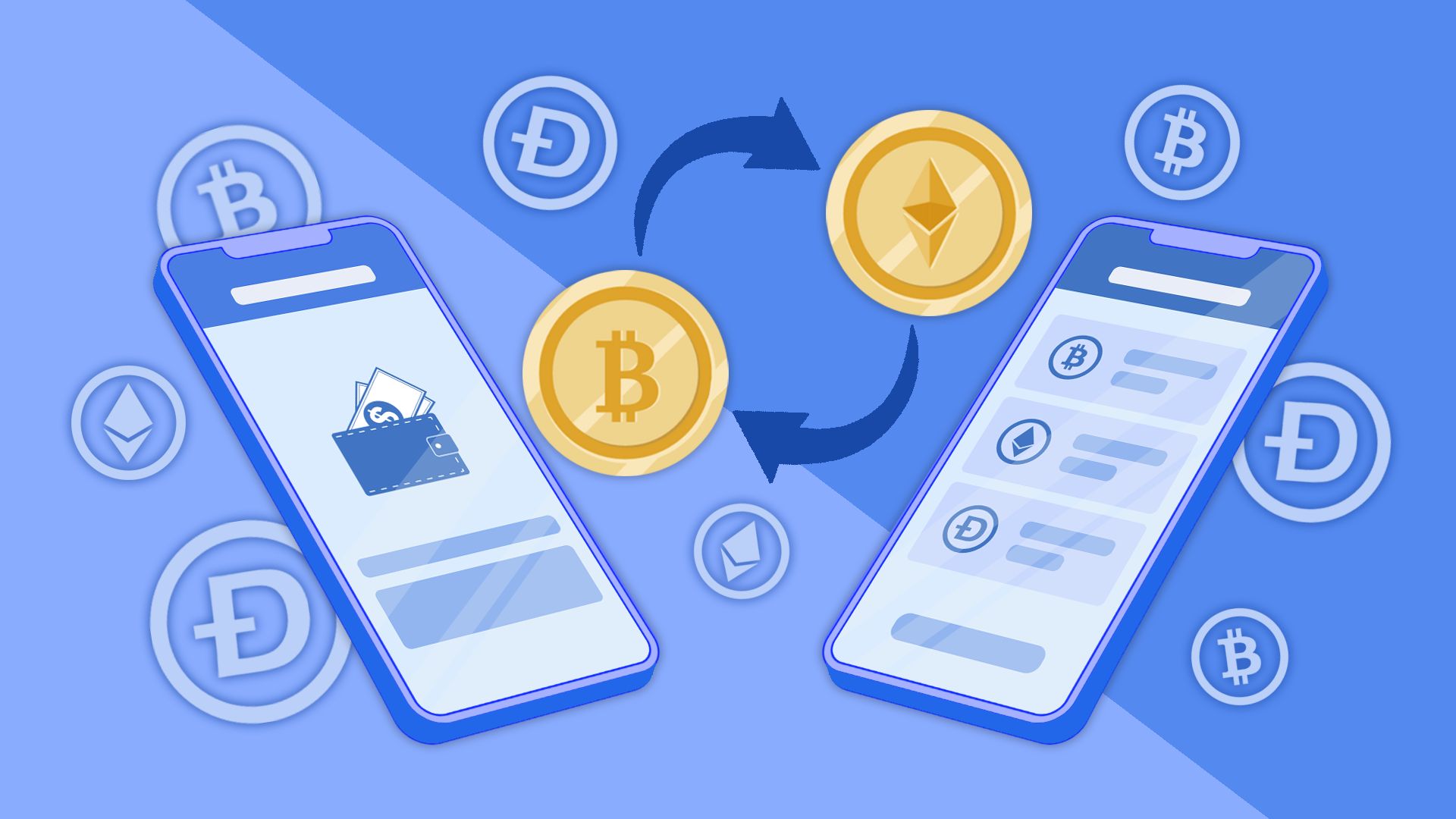Introduction
As our world becomes increasingly digital, it is no surprise that currencies are also making the leap into the digital realm. Digital currency, such as Bitcoin and Ethereum, offers a decentralized, secure, and efficient way to conduct financial transactions online. However, one crucial aspect of digital currency that often goes unnoticed is its reliance on the electrical grid.
The electrical grid plays a crucial role in the functioning of digital currencies. It powers the computers and servers that process and verify transactions, ensuring the integrity of the currency’s underlying technology, the blockchain. But what if the electrical grid goes offline? How would digital currency survive without the infrastructure that powers it?
In this article, we will explore the challenges and potential solutions surrounding digital currency in the event of an electrical grid outage. We will delve into offline storage options, offline transactions, the role of peer-to-peer networks, and the resilience of blockchain technology to power outages. By understanding these concepts, we can gain insights into the future of digital currency and its potential to function even without a stable electrical grid.
It is essential to consider how digital currency can adapt and continue to provide value in various scenarios. While an electrical grid outage may seem unlikely, it is crucial to prepare for potential disruptions and explore alternative methods that can keep digital currency accessible and functional.
What is Digital Currency?
Digital currency, also known as cryptocurrency, is a digital form of money that operates independently of any central authority or government. Unlike traditional fiat currencies such as the US dollar or the Euro, digital currencies are decentralized and rely on cryptographic technology for secure transactions.
At the core of digital currency is the concept of the blockchain—a decentralized, transparent, and immutable ledger that records all transactions. This technology ensures the integrity and security of digital currency by eliminating the need for traditional intermediaries, such as banks or government bodies, to verify and authorize transactions.
One of the most well-known digital currencies is Bitcoin, which was introduced in 2009 by an anonymous person or group of individuals known as Satoshi Nakamoto. Since then, numerous other digital currencies have emerged, each with its unique features and use cases. Ethereum, for example, introduced smart contracts, enabling developers to create and deploy decentralized applications (DApps) on its blockchain.
Digital currencies offer several advantages over traditional forms of money. Firstly, they enable fast and low-cost cross-border transactions without the need for intermediaries. This eliminates the delays and fees associated with traditional banking systems. Secondly, digital currencies provide enhanced privacy and security, as transactions on the blockchain are pseudonymous and can be conducted without revealing personal information.
Additionally, digital currencies empower individuals by granting them full ownership and control over their funds. With traditional banking, account freezes, restrictions, and censorship can occur, limiting financial freedom. Digital currencies give users full autonomy over their financial transactions and eliminate the reliance on third parties.
It is important to note that the value of digital currencies can be highly volatile, making them attractive to investors and speculators but potentially risky for everyday transactions. Furthermore, regulatory frameworks around digital currencies are still evolving, with governments and financial institutions grappling with the appropriate regulations to ensure consumer protection and prevent illegal activities.
Despite these challenges, digital currencies have gained widespread recognition and adoption. They have the potential to revolutionize the traditional financial system by providing a more inclusive, secure, and efficient means of conducting transactions, independent of geographical boundaries or central authorities.
The Role of the Electrical Grid in Digital Currency
The electrical grid plays a crucial role in the functioning of digital currencies. It provides the necessary power to run the computers, servers, and network infrastructure required to process and verify transactions. Without a stable and reliable electrical grid, the entire ecosystem of digital currency could come to a halt.
Firstly, the electrical grid powers the mining process, which is essential for maintaining the security and integrity of digital currencies. Miners use powerful computers to solve complex mathematical problems, which validates transactions and adds them to the blockchain. This process requires a significant amount of electricity to operate at scale.
Secondly, the electrical grid is responsible for powering the network infrastructure that allows digital currency transactions to occur. Every transaction involves the transmission of data over the internet, which relies on a functioning electrical grid to keep the connectivity constant and uninterrupted.
Furthermore, digital currency relies on a decentralized network of nodes that verify and validate transactions. These nodes are distributed globally and are operated by individuals or organizations. They play a crucial role in maintaining the consensus and security of digital currencies. However, these nodes also need a stable source of power to operate effectively.
It is worth mentioning that digital currency mining operations can be energy-intensive, and they often draw significant amounts of electricity from the grid. This has raised concerns about the environmental impact of digital currencies, particularly if the electricity used is generated from non-renewable sources.
The dependence of digital currency on the electrical grid highlights the vulnerability of the system to power outages or disruptions. If the electrical grid goes offline, it would impact the ability to process transactions, mine new coins, and maintain the connectivity of the network.
Therefore, it is crucial for proponents of digital currency to evaluate and explore alternative solutions and strategies to ensure the resilience and continuity of digital currency, even in the face of electrical grid outages. This includes developing offline storage options, implementing peer-to-peer networks, and leveraging the underlying technology of digital currency, such as blockchain, to provide a robust and decentralized infrastructure.
What If the Electrical Grid Goes Offline?
The dependence of digital currency on the electrical grid raises concerns about its resilience and functionality in the event of a power outage or grid failure. If the electrical grid goes offline, it would have significant implications for the functioning of digital currencies and their ability to process transactions.
In a scenario where the electrical grid goes offline, the mining operations that power digital currencies would be severely impacted. Mining requires a substantial amount of electricity to operate mining rigs, and without power, these operations would come to a halt. This would disrupt the verification and validation process, hindering the addition of new transactions to the blockchain.
Furthermore, the loss of power would also affect the network infrastructure required for digital currency transactions. The internet relies on a stable power supply to function, and without electricity, connectivity would be disrupted. This would make it difficult for users to access their digital wallets, send or receive payments, and participate in the network.
Offline digital currency transactions would also be affected in the absence of a functioning electrical grid. With no power, it would be challenging to process and validate transactions, as the nodes in the network would not be operational. This could lead to delays and potential errors in transaction processing, causing inconvenience for users and businesses relying on digital currency.
However, it is essential to note that developers and innovators have been working on solutions to mitigate the impact of an electrical grid outage on digital currency. One possible solution is the development of offline storage options for digital currency, such as paper wallets and hardware wallets.
Paper wallets allow users to generate and store their digital currency keys offline, eliminating the need for a constant internet connection. By keeping the private keys on paper, users can safeguard their digital currency even if the electrical grid goes offline. This method provides an extra layer of security against hacking or cyberattacks.
Another offline storage option is hardware wallets, which are physical devices specifically designed to secure and store digital currency keys. These devices are typically equipped with encryption and authentication features, ensuring the safe storage of digital currency even in the absence of an online connection.
In addition to offline storage solutions, peer-to-peer networks can also facilitate offline transactions. Peer-to-peer networks allow users to transact directly with each other without the need for intermediaries or a centralized network. Through these networks, users can conduct offline transactions by exchanging digital currency directly, even if the electrical grid is offline.
Furthermore, the underlying technology of digital currency, blockchain, brings inherent resilience to the system. Blockchain technology is designed to operate in a distributed manner, with copies of the blockchain stored on multiple nodes. This redundancy ensures that the blockchain remains accessible and intact even if some nodes go offline due to power outages.
In summary, an electrical grid outage would undoubtedly pose challenges to the functioning of digital currencies. However, with offline storage solutions, peer-to-peer networks, and the resilience of blockchain technology, the digital currency ecosystem has the potential to adapt and continue operations, providing users with access to their funds even in the absence of a stable electrical grid.
Overview of Offline Digital Currency Solutions
In order to ensure the accessibility and functionality of digital currency in the event of an electrical grid outage or offline scenario, various offline solutions have emerged. These solutions focus on enabling users to securely store and transact with their digital currency even without an internet connection. Let’s explore some of the prominent offline digital currency solutions:
1. Offline Storage Options: Offline storage solutions provide a way for users to store their digital currency securely without relying on an internet connection. The two common offline storage options are paper wallets and hardware wallets.
– Paper Wallets: A paper wallet is a physical printout that contains the public and private keys associated with a user’s digital currency. It is generated offline and provides an extra layer of security by keeping the keys offline, away from potential online threats. Users can generate a paper wallet by using a paper wallet generator tool and print it out for safekeeping in a physical vault or secure location.
– Hardware Wallets: A hardware wallet is a physical device that securely stores a user’s digital currency private keys. These devices are designed to keep the private keys offline and provide a secure way to sign transactions. Hardware wallets are typically hardware-encrypted and offer additional security features such as PIN code protection and seed phrases for backup. Users can connect the hardware wallet to a computer or mobile device to transact securely, even in an offline environment.
2. Offline Transactions: Offline transactions enable users to transact with digital currency without relying on a centralized network or the internet. These transactions occur directly between users, utilizing peer-to-peer networks or alternative communication channels.
– Peer-to-Peer Networks: Peer-to-peer networks facilitate direct transactions between users without the need for intermediaries. In an offline scenario, users can establish local connections or use alternative communication methods such as Bluetooth or NFC (Near Field Communication) to transact offline. This enables users to exchange digital currency even without a functioning electrical grid or internet connection.
3. Utilizing Blockchain Technology: Blockchain technology itself provides inherent resilience and offline capabilities for digital currency transactions.
– Immutable Ledger: The blockchain serves as an immutable ledger that records all transactions. Each participant in the network has a copy of the blockchain, and even if some nodes are offline due to an electrical grid outage, the blockchain remains intact and accessible. This ensures that users can still access and verify their digital currency transactions without relying on a centralized authority or a live internet connection.
– Blockchain Forks: In cases of network splits or forks, such as a hard fork or a temporary network partition, different versions of the blockchain can exist. This can create an opportunity for users to carry out offline transactions within a specific version of the blockchain until connectivity is restored and the network converges again.
These offline digital currency solutions provide users with alternative ways to store their digital currency securely and transact even in offline or grid outage scenarios. By leveraging offline storage options, utilizing peer-to-peer networks, and capitalizing on the resilience of blockchain technology, digital currencies can adapt and continue to provide value to users even without a stable electrical grid.
Storing Digital Currency Offline
Ensuring the security of digital currency is of utmost importance, especially when considering offline scenarios such as an electrical grid outage. Storing digital currency offline provides an extra layer of protection against online threats and potential disruptions. Let’s explore some of the popular methods for storing digital currency offline:
1. Paper Wallets: Paper wallets are an offline storage option that involves generating and printing the digital currency’s public and private keys onto a physical piece of paper. This allows users to securely store their keys offline, away from potential online attacks. Paper wallets can be generated using dedicated paper wallet generator tools, which create a printable template with the necessary QR codes and key information. Users can then print out the wallet and store it in a safe physical location, such as a vault or a safe deposit box.
Advantages: Paper wallets are highly secure as they are not connected to the internet or any online device, minimizing the risk of hacking or unauthorized access. They are also immune to malware or keylogger attacks, as they are not generated or stored on a computer or mobile device.
Disadvantages: The primary concern with paper wallets is physical vulnerability. If the paper wallet is lost, damaged, or stolen, the user may permanently lose access to their digital currency. Additionally, securely generating and printing a paper wallet requires caution and attention to ensure the process is not compromised or susceptible to tampering.
2. Hardware Wallets: Hardware wallets are dedicated physical devices designed to store digital currency private keys offline. These devices are specifically designed to provide maximum security and usability, often incorporating encryption, PIN protection, and backup options. Users connect the hardware wallet to their computer or mobile device to generate and sign transactions, providing an additional layer of security against online threats.
Advantages: Hardware wallets offer a high level of security, as they keep the private keys offline and are resistant to malware or hacking attempts. They provide a user-friendly interface for managing and transacting with digital currency securely. Furthermore, they often include backup and recovery options, protecting against the loss of the hardware wallet itself.
Disadvantages: The main drawback of hardware wallets is the physical dependency on the device. If the hardware wallet is lost or damaged, accessing the digital currency can become difficult or even impossible. Additionally, there may be a cost associated with purchasing a hardware wallet.
3. Offline Considerations: When storing digital currency offline, it is crucial to consider a few key points:
– Backup: Ensure proper backup of the offline storage method, whether it is a paper wallet or a hardware wallet. This may involve creating multiple copies and storing them securely in different physical locations.
– Security: Implement additional security measures, such as password-protecting the printed paper wallet or enabling the PIN feature on the hardware wallet. It is important to keep offline storage options safe from physical threats, such as fire or water damage.
– Consideration of Accessibility: While offline storage provides security, it is also essential to consider accessibility. Ensure that the stored digital currency remains easily retrievable in case of a need to access or transfer the funds.
By utilizing offline storage options such as paper wallets or hardware wallets, digital currency holders can significantly enhance the security of their assets, protecting them from online threats and potential disruptions caused by an electrical grid outage. However, it is important to carefully weigh the advantages and disadvantages of each method and implement proper procedures to ensure the safety and accessibility of stored digital currency.
Paper Wallets: A Secure Offline Storage Option
Paper wallets are a popular and secure method for storing digital currency offline. They provide users with a physical representation of their digital currency’s public and private keys, offering an additional layer of protection against online threats and potential disruptions. Let’s explore why paper wallets are considered a secure offline storage option:
Generation and Printing: To create a paper wallet, users utilize dedicated paper wallet generator tools. These tools generate a printable template containing the public and private keys in the form of QR codes or alphanumeric sequences. Users can then print out the paper wallet and store it in a secure physical location.
Offline Security: Paper wallets provide excellent security as they are not connected to the internet or any online device. The private keys are generated offline, reducing the risk of exposure to malware, hacking, or phishing attempts. Unlike digital storage options, paper wallets are immune to online threats, making them highly secure.
Protection from Online Attacks: Paper wallets offer enhanced protection against online attacks, as the private keys are never exposed to the internet. Users can keep their digital currency safe from keyloggers, malicious software, or other cyber threats that can compromise online storage methods.
Cold Storage: Paper wallets are often referred to as “cold storage” because they keep the private keys offline, away from the reach of potential hackers. This makes them a viable option for long-term storage of digital currency, providing an added sense of security for users seeking to protect their assets against online vulnerabilities.
Backup and Redundancy: Paper wallets can be backed up by creating multiple copies of the wallet and storing them in separate physical locations. This redundancy ensures that even if one copy is lost or damaged, users can still access their digital currency using one of the backup copies. It is crucial to consider backup strategies to avoid the risk of losing access to funds stored in the paper wallet.
Physical Vulnerability: While paper wallets offer offline security, they are susceptible to physical damage or loss. If the paper wallet is damaged, destroyed, or stolen, users may permanently lose their access to the stored digital currency. It is crucial to keep the paper wallet in a safe and secure place, such as a vault or a waterproof and fire-resistant container, to protect it from physical threats.
Adding Extra Security: Users can enhance the security of paper wallets by implementing additional layers of protection. For example, users can consider password-protecting the paper wallet document, encrypting the files, or even laminating the printed paper wallet to make it more durable and resistant to wear and tear.
It is important to note that users must exercise caution during the generation and printing process of paper wallets. It is recommended to use trusted and secure paper wallet generator tools, downloaded from reputable sources. Users should also ensure that the paper wallet is generated on a secure and malware-free computer.
Overall, paper wallets offer an effective and secure offline storage option for digital currency holders seeking to protect their assets from online threats and potential disruptions caused by an electrical grid outage. By keeping the private keys offline and utilizing proper backup strategies, users can have peace of mind knowing that their digital currency is safely stored in a tangible and highly secure manner.
Hardware Wallets: Safeguarding Your Digital Currency Offline
Hardware wallets are a highly secure method for storing digital currency offline. These physical devices are specifically designed to safeguard the private keys associated with digital currency, providing users with an extra layer of protection against online threats and potential disruptions. Let’s explore why hardware wallets are considered a reliable offline storage option:
Offline Private Key Storage: Hardware wallets store the digital currency’s private keys securely on the device itself, keeping them offline and away from potential online vulnerabilities. The private keys never leave the device, minimizing the risk of exposure to malware, hacking, or phishing attempts.
Encryption and PIN Protection: Hardware wallets are typically equipped with strong encryption algorithms and PIN code protection. Users must enter a unique PIN code to access the hardware wallet and sign transactions. This adds an additional layer of security, ensuring that even if the device falls into the wrong hands, unauthorized access to the digital currency is exceedingly difficult.
Backup and Recovery Options: Hardware wallets often incorporate backup and recovery features. During the initial setup, users are provided with a recovery seed phrase—a sequence of randomly generated words. This seed phrase serves as a backup in case the hardware wallet is lost, stolen, or damaged. Users can use the recovery seed phrase to restore their digital currency holdings on a new hardware wallet.
User-Friendly Interface: Hardware wallets are designed to be user-friendly and intuitive, even for individuals with minimal technical knowledge. Most hardware wallets come with companion applications that provide a user-friendly interface for managing digital currency holdings, initiating transactions, and reviewing account balances. This ensures that users can easily and securely interact with their digital currency using the hardware wallet.
Protection against Online Threats: Hardware wallets protect digital currency from online threats, such as keyloggers or malicious software, as the private keys remain offline on the device. Users can safely connect the hardware wallet to a computer or mobile device to initiate transactions, confident that their private keys are protected from potential online attacks.
Physical Dependency: Since hardware wallets are physical devices, users are responsible for keeping them safe and secure. It is important to store the hardware wallet in a secure location, such as a safe or a lockbox, to protect it from physical threats such as theft, damage, or loss.
Cost Considerations: Hardware wallets do involve a monetary cost, as users need to purchase the device. However, the investment in a hardware wallet is worth considering to safeguard significant amounts of digital currency. The peace of mind and enhanced security that hardware wallets provide outweigh the upfront cost.
When considering a hardware wallet, users should research and choose a reputable and trusted brand. It is essential to purchase the hardware wallet directly from the manufacturer or authorized resellers to avoid counterfeit or tampered devices that could compromise the security of the digital currency.
Overall, hardware wallets offer a robust and secure offline storage option for digital currency holders seeking the highest level of protection for their assets. By keeping the private keys offline, utilizing encryption and PIN protection, incorporating backup options, and safeguarding the physical device, users can confidently store and manage their digital currency holdings, knowing that their assets are well-protected against online threats and potential disruptions.
Offline Transactions: How Would They Work?
Offline transactions in the context of digital currency refer to the ability to conduct transactions without relying on a centralized network or an active internet connection. While online connectivity is typically necessary to validate and confirm digital currency transactions, offline transactions can still occur through alternative methods. Let’s explore how offline transactions would work:
1. Peer-to-Peer Networks: Offline transactions can be facilitated through peer-to-peer networks, where users can directly transact with each other without the need for intermediaries or a centralized network. Peer-to-peer networks enable users to connect locally or through alternative communication methods, such as Bluetooth or NFC (Near Field Communication), to initiate and authenticate offline transactions.
2. Offline Transaction Validation: Offline transactions require an alternative method for validating the authenticity and integrity of the transaction without relying on a centralized network or the internet. This can be achieved through techniques such as cryptographic signatures, which ensure the validity of the transaction even in offline scenarios.
3. QR Code Transactions: QR codes can be used to facilitate offline transactions. A user generating an offline transaction can create a QR code containing the transaction details, including the recipient’s address and the amount to be sent. The recipient can then scan the QR code using their digital currency wallet, which will parse the transaction details and initiate the transaction when connectivity is restored.
4. Transaction Broadcasting: For offline transactions to be successfully completed, the transaction details need to be eventually broadcasted to the network for confirmation and inclusion in the blockchain. This can be achieved when the offline user regains online connectivity, allowing the wallet to broadcast the transaction to the network for verification and recording.
5. Double-Spending Prevention: Offline transactions present a challenge in preventing double-spending, where the same digital currency is spent more than once. To mitigate this risk, offline transactions can include mechanisms such as time stamps or transaction notifications. When the transaction is broadcasted to the network, it can be validated against the blockchain to ensure that the same digital currency has not been spent elsewhere in the interim.
6. Synchronization and Confirmation: Once the offline transaction is broadcasted to the network, it undergoes the regular process of synchronization and confirmation. The transaction is processed, verified, and added to the blockchain, ensuring its inclusion in the ledger alongside other transactions. This synchronization typically happens automatically when the user’s wallet regains connectivity.
It is important to note that offline transactions may involve additional risks and challenges compared to online transactions. Users should exercise caution when engaging in offline transactions, ensuring that they are conducted securely and with trusted counterparts. Verifying the authenticity of the transaction details and the recipient’s address is crucial to prevent fraud or unauthorized transactions.
While offline transactions enable digital currency transactions in the absence of an active internet connection, it is still essential for users to regain online connectivity periodically to synchronize their wallets, ensure transaction confirmation, and update their transaction history.
Overall, offline transactions in digital currency offer an alternative method for conducting transactions, especially in scenarios where online connectivity is limited or unavailable. Through peer-to-peer networks, QR codes, and the eventual communication with the network, users can still initiate and authenticate offline transactions, expanding the accessibility and usability of digital currency even in offline environments.
Peer-to-Peer Networks: Enabling Offline Transactions
Peer-to-peer (P2P) networks play a vital role in enabling offline transactions for digital currency. These decentralized networks allow users to directly transact with each other without the need for intermediaries or a centralized authority. By leveraging P2P networks, users can conduct offline transactions, even in scenarios where internet connectivity is limited or unavailable. Let’s dive into how P2P networks enable offline transactions:
1. Direct Interaction: P2P networks facilitate direct interaction between users, enabling them to transact directly without needing approval or confirmation from a centralized authority. In an offline scenario, users can establish connections through local networks or alternative communication methods, such as Bluetooth or NFC, to initiate offline transactions.
2. Local Network Connections: In offline situations, users can connect their devices within the same local network or through ad hoc networks. With this local connection, users can discover other nearby devices and engage in secure offline transactions. These connections can be established in various settings, such as in close physical proximity or in areas where internet connectivity is unavailable.
3. QR Code Transactions: P2P networks often utilize QR codes to facilitate offline transactions. A user initiating an offline transaction can generate a QR code containing the transaction details, including the recipient’s address and the amount to be sent. The recipient can then scan the QR code using their digital currency wallet, which extracts the transaction details and initiates the transaction when connectivity is restored.
4. Security Features: P2P networks incorporate security features to ensure the integrity and authenticity of offline transactions. These may include cryptographic algorithms for transaction verification, digital signatures to confirm the identity of the sender, and encryption methods for securing the transaction details during transmission within the P2P network.
5. Resilience and Redundancy: P2P networks are designed to be resilient and capable of operating even in the absence of a centralized network or internet connectivity. Decentralized nodes within the P2P network continue to communicate and validate transactions, allowing transactions to occur offline. This redundancy ensures that digital currency transactions can still be completed, even when connectivity to the broader network is unavailable.
6. Trust and Security Concerns: While P2P networks offer decentralized and direct transactions, it is vital for users to exercise caution and validate the trustworthiness of their transaction counterpart. Offline transactions rely on the mutual trust between parties involved in the transaction process. It is essential to verify the recipient’s identity, ensure the accuracy of provided addresses or QR codes, and evaluate the reputation and history of the peer within the P2P network.
Peer-to-peer networks provide a viable solution for enabling offline transactions in digital currency. By facilitating direct communication and leveraging local network connections, P2P networks allow users to transact with each other even when there is no active internet connection. QR codes and robust security features ensure the integrity and security of offline transactions, while the resilience and redundancy of the P2P network infrastructure maintain the functionality of the digital currency ecosystem.
However, users must remain vigilant when engaging in offline transactions through P2P networks. It is important to verify the authenticity of transaction details, adopt secure communication practices, and exercise caution when interacting with unknown peers. By following best practices and ensuring that proper safeguards are in place, users can leverage the power of P2P networks to conduct secure and efficient offline transactions in the world of digital currency.
Blockchain Technology: Immune to Electrical Grid Outages?
Blockchain technology, the foundation of digital currencies like Bitcoin and Ethereum, is often hailed for its resilience and immutability. However, it is important to understand that while blockchain technology itself is highly robust, it is not inherently immune to electrical grid outages. Let’s explore the relationship between blockchain technology and electrical grid outages:
Decentralized Nature: Blockchain technology operates in a decentralized manner, with copies of the blockchain stored on multiple nodes distributed across the network. This decentralized nature makes the blockchain more resistant to single points of failure, such as a centralized server or system. If some nodes in the network go offline due to an electrical grid outage, other nodes can continue to function and maintain the integrity of the blockchain.
Consensus Mechanism: Blockchain networks rely on consensus mechanisms, such as Proof-of-Work (PoW) or Proof-of-Stake (PoS), to validate and agree upon the state of the blockchain. These mechanisms ensure that a majority of nodes need to agree on a new block before it is added to the blockchain. In the event of an electrical grid outage, the consensus process may slow down or experience temporary disruptions. However, once the electrical grid is restored, the network can synchronize and continue validating transactions and adding blocks to the blockchain.
Offline Transactions and Synchronization: Blockchain technology allows for offline transactions, as mentioned earlier. These transactions can occur in scenarios where users have no internet connectivity, such as during an electrical grid outage. Users can generate and sign transactions offline and then broadcast them to the network once connectivity is restored. The blockchain network will synchronize and validate these transactions, ensuring their inclusion in the decentralized ledger.
Impact on Network Performance: While blockchain technology can adapt to temporary electrical grid outages, prolonged outages or disruptions to the electrical grid can impact the overall performance of the blockchain network. The reduction in the number of active nodes due to power loss can slow down transaction processing and block confirmation times. This may introduce delays and inefficiencies into the network until the electrical grid is restored and the nodes regain connectivity.
Energy Consumption: Another aspect to consider is the energy consumption associated with blockchain networks, particularly those that use PoW consensus mechanisms. Mining operations that secure the blockchain and validate transactions require a significant amount of electricity. In the event of an electrical grid outage, mining operations would halt, impacting the network’s overall security until power is restored.
Backup Systems and Redundancy: To mitigate the impact of electrical grid outages, blockchain networks can implement backup power systems or alternative energy sources. In some cases, blockchain networks are powered by renewable energy sources, such as solar or wind, further increasing their resilience to grid failures. These backup systems and redundancy measures help ensure the continued operation of the blockchain network even during power disruptions.
Overall Resilience: While blockchain technology is not entirely immune to electrical grid outages, it possesses inherent resilience due to its decentralized nature, offline transaction capabilities, and the ability of nodes to synchronize once connectivity is restored. These features enable blockchain networks to adapt to temporary outages and continue functioning while maintaining the integrity of the decentralized ledger.
It is important to recognize that while blockchain technology offers resilience, the wider infrastructure supporting digital currencies, such as mining operations and internet connectivity, may still be significantly impacted by electrical grid outages. Therefore, it is crucial to consider backup systems, redundancy measures, and alternative energy sources to ensure the continued operation of blockchain networks even in challenging power outage scenarios.
Potential Risks and Challenges of Offline Digital Currency
While offline digital currency storage and transactions offer increased security and accessibility in certain scenarios, there are still potential risks and challenges to be aware of. Understanding these risks is crucial for digital currency holders seeking to protect their assets. Let’s explore some of the potential risks and challenges associated with offline digital currency:
1. Loss or Damage of Offline Storage: One of the primary risks of offline digital currency storage is the loss or damage of the storage medium. Whether it is a paper wallet or a hardware wallet, if the offline storage is lost, stolen, or damaged, the digital currency may become permanently inaccessible. Ensuring proper physical security and implementing backup strategies is essential to mitigate this risk.
2. Lack of Redundancy: Offline storage of digital currency typically involves a single copy of the private keys or wallet. If this storage is compromised or lost, there may be no redundant copies to recover the lost assets. It is vital for users to create multiple backups and securely store them in different physical locations to provide redundancy and protect against the loss or failure of the primary offline storage.
3. Human Error: Human error poses a significant risk in offline digital currency transactions. During the generation or printing of paper wallets or the setup and usage of hardware wallets, mistakes can happen. Entering incorrect details, misplacing important information, or mishandling the devices can lead to the loss of digital currency. Users must exercise caution and carefully follow instructions to minimize the risk of human error.
4. Physical Vulnerability: Offline storage methods, such as paper wallets or hardware wallets, are physically vulnerable. Paper wallets can be damaged or destroyed by fire, water, or other accidents. Hardware wallets are susceptible to physical damage or loss if not properly handled or stored. Protecting offline storage from physical vulnerabilities, such as theft, damage, or environmental factors, is crucial to safeguard the digital currency.
5. Limited Accessibility: Offline digital currency storage may limit the accessibility and convenience of transacting. While offline transactions are possible, they require manual initiation and, in some cases, the presence of the counterpart physically. This can be inconvenient in fast-paced environments or when immediate transactions are required. Users must balance the security benefits of offline storage with the need for accessibility and convenience.
6. Potential Obsolescence: Offline digital currency storage methods may become obsolete over time. As technology advances and new storage solutions emerge, older methods may become less compatible or supported. It is essential to stay updated with developments in the digital currency space and periodically reassess the effectiveness and security of offline storage methods.
7. Regulatory Compliance: Offline digital currency storage and transactions do not exempt users from regulatory requirements. Users must still comply with local laws and regulations, such as tax reporting and anti-money laundering regulations, even when utilizing offline methods. It is crucial to remain informed about the legal obligations and responsibilities associated with offline digital currency storage and usage.
Despite these risks and challenges, offline digital currency storage and transactions can offer enhanced security and protection against online threats. By implementing proper security measures, redundancy strategies, and adhering to best practices, users can mitigate these risks and safely leverage offline digital currency storage methods to protect their assets.
Conclusion
Offline digital currency storage and transactions provide users with enhanced security and accessibility, allowing them to protect their assets and conduct transactions even in scenarios where the electrical grid is offline or internet connectivity is limited. Paper wallets and hardware wallets offer secure offline storage options, keeping private keys offline and away from potential online threats. Peer-to-peer networks enable offline transactions, fostering direct transactions between users without the need for intermediaries or centralized networks.
While offline digital currency solutions offer numerous benefits, there are also potential risks and challenges to consider. Loss or damage of offline storage, lack of redundancy, human error, physical vulnerability, and limited accessibility are all factors that users must address to ensure the security and accessibility of their stored digital currency. Furthermore, compliance with regulatory requirements remains essential, even in offline digital currency transactions.
Blockchain technology, the underlying foundation of digital currencies, demonstrates resilience to electrical grid outages through its decentralized nature, offline transaction capabilities, and the ability of nodes to synchronize once connectivity is restored. However, extended outages can impact network performance and disrupt mining operations that secure the blockchain.
To mitigate risks and optimize the benefits of offline digital currency storage and transactions, users must adhere to best practices. This includes implementing secure storage measures, creating backups, verifying transaction details, adopting trusted offline methods, and protecting physical storage from vulnerabilities. Regular review and adaptation to evolving technologies and regulations are also crucial to ensure the effectiveness and compatibility of offline storage methods.
Offline digital currency solutions empower users to maintain control over their assets even in challenging scenarios. By leveraging the strengths of offline storage and transactions while being mindful of the associated risks, individuals can confidently navigate the world of digital currency and capitalize on the security, accessibility, and decentralization it offers.







